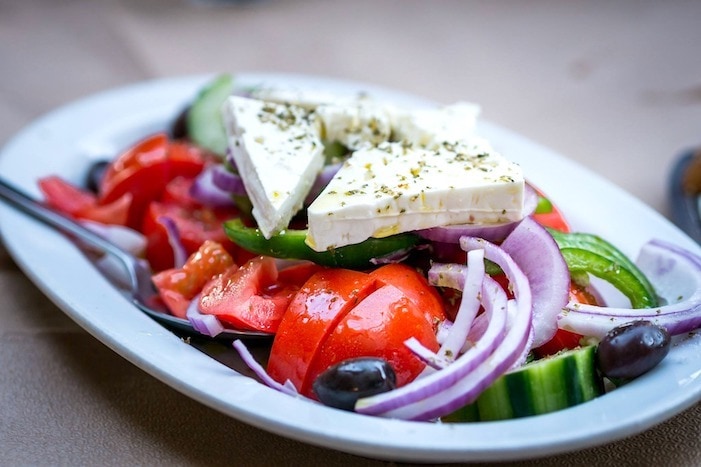Mediterranean Style Diet Rich in Plant Foods May Prevent Weight Gain – Here’s 5 Ways To Do It.

By Contributor Janet Brancato, MS, RDN
Following a plant-based, Mediterranean style diet may cut obesity risk by 43% according to Spanish researchers. An observational study was conducted by the University of Navarra, Spain looking at the connection of obesity (BMI body mass index >30) prevalence with diets that were pro-vegetarian in over 16,000 healthy, non-obese adults.
The study has followed graduates of the school since 1999. Participants filled out a comprehensive questionnaire at the beginning of the study to determine the level of pro-vegetarian foods in their typical diet. A pro-vegetarian diet is one abounding in plant sources like vegetables, fruits, and grains. The least pro-vegetarian diet included an eating style richer in animal foods like meat, or other animal fats.
Researchers used a point system based upon the foods typically consumed by the participants and each was given a score. The pro-vegetarian foods consisted of 7 plant food groups: vegetables, fruits, grains, nuts, olive oil, legumes (such as peas, beans, and lentils) and potatoes. Points were given to study participants who ate from the pro-vegetarian foods. On the other hand, points were subtracted from participants who included the five animal groups: animal fats (fats from animal origin like butter, lard or bacon fat as examples), dairy, eggs, fish, other seafood, and meat. Once the participants were scored, they were put into 1 of the 5 categories and followed for approximately 10 years. The categories included the 20% with the most pro-vegetarian diet to the 20% with the least pro-vegetarian diet. The researchers discovered that those who ate the most pro-vegetarian diet had a 43% reduced risk of obesity.
Including more plant based foods is also known for decreasing chronic conditions like cardiovascular disease and diabetes. Aim for at least 3 servings of vegetables and 2 servings of fruit daily. Remember a serving is a 1 cup of fruit and raw vegetables, and ½ cup of cooked vegetables.
The Mediterranean diet is rich in plant based foods using whole grains, vegetables, fruits, nuts, seeds and beans as foundational foods. These plant foods are rich in fiber, which can fill you up controlling the appetite and portions. Here are some ways to fill up your day with more plant foods:
1. Snack on nuts and seeds- a handful or ¼ cup between meals can curb the appetite and supply heart healthy fats.
2. Try roasting chick peas and use as a snack or to top your salad at meal time.
**Just drizzle some olive oil over the cooked beans, and sprinkle your favorite seasoning blend. Cook in the oven at 400 degrees Fahrenheit (200 C) for 20-30 minutes until golden and crispy!
3. Have oatmeal for breakfast (instead of the ready to eat cereals) with seasonal fruit and walnuts on top – sprinkle with some cinnamon.
4. Include vegetables at each meal-
**Breakfast: add spinach to your omelets, with sliced tomato and avocado on the side. Consume toast with some cheese and tomato.
**Lunch and Dinner: Consume a vegetable based casserole or include a salad at lunch with leafy greens, tomatoes, carrots, olives and beans, dress it lightly with olive oil & vinegar or lemon juice. Or if you are eating meat or fish make sure 2/3 of your plate is filled with vegetables.
5. Have fruit for dessert- enjoy seasonal, local fruit for a hydrating and delicious finish to your meals. The natural sugars will satisfy a sweet tooth!

Hi Elena,
I’ve noticed a number of times recipes for cooking chickpeas in the oven, e.g., your suggestion “Try roasting chick peas and use as a snack or to top your salad at meal time.”
Are the chickpeas the raw chickpeas or do you roast them after soaking.
Hi Elena,
I’ve noticed a number of times recipes for cooking chickpeas in the oven, e.g., your suggestion “Try roasting chick peas and use as a snack or to top your salad at meal time.”
Are the chickpeas the raw chickpeas or do you roast them after soaking.
Thank you.
Yes, they should be roasted